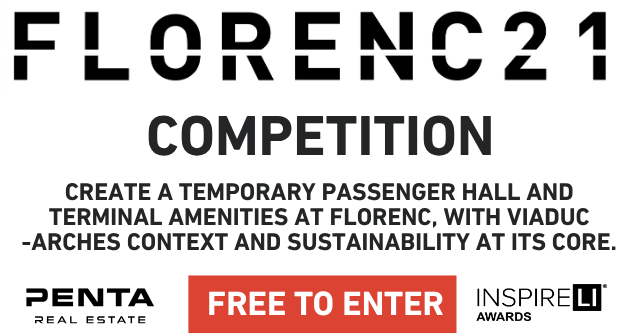Obnova funkcionalistické vily Wittal v Brně
Idea projektu
Předmětem zadání je funkcionalistická vila Wittal v Brně, postavená v roce 1932 podle návrhu architekta Heinricha Bluma. Vila, která se nachází ve vilové čtvrti Pisárky, představuje významný příklad meziválečné architektury a je zapsána jako kulturní památka. Původně soukromé sídlo rodiny Wittalů bylo po roce 1945 znárodněno a využíváno k obytným účelům. Cílem současného projektu je vilu obnovit a znovu využít jako Centrum židovské kultury ŠTETL, které bude plnit vzdělávací, kulturní a komunitní funkci. Zbylé autentické prvky - jako jsou původní otvory, podlahové obklady, klempířské detaily a vnitřní vybavení - projdou plně památkově chráněnou obnovou, čímž bude zachována historická hodnota budovy. Nová funkce vily propojí kulturní dědictví se současnými společenskými potřebami a zajistí dlouhodobou udržitelnost místa jako živého centra židovské kultury. Památková obnova se zaměří na zachování původních prvků v kontextu nového využití budovy a vytvoří harmonickou kombinaci historie a moderních požadavků kulturní instituce. Vila Wittal tak získá novou roli jako místo setkávání, vzdělávání a dialogu - připomínající nejen příběh svých původních obyvatel, ale také širší kontext židovské identity v Brně.
Popis projektu
Rekonstrukce funkcionalistické Wittalovy vily v Brně vychází z respektu k historickým hodnotám budovy a jejího okolí. Urbanistická struktura čtvrti Pisárky zůstává zachována - veškeré zásahy jsou zaměřeny výhradně na pozemek vily a reflektují jak historický kontext, tak aktuální potřeby nové funkce objektu. Hlavní důraz je kladen na vyjasnění a obnovu vztahů v rámci pozemku, včetně obnovy původní štěrkové cesty, terasovité zahrady a celkového krajinného rázu území. Zahrada prochází výraznou revitalizací - kromě obnovených teras, které umožňují pořádání venkovních kulturních akcí, je na pozemku umístěna židovská suka jako symbolický i funkční prvek komunitního setkávání. Stávající bazén je zachován a nově pojat jako přírodní biotop, podporující ekologickou funkci místa a místní biodiverzitu. Architektonický přístup ctí původní výraz a hodnoty funkcionalistické stavby. Nové prvky - například diskrétně integrovaný výtah - umožňují plnou přístupnost, aniž by narušovaly kompozici interiéru nebo autenticitu původních prvků. Fasáda byla obnovena v původním jemném béžovém tónu, přičemž se záměrně vyhnula rušivému použití bílé barvy, a posílila tak estetiku zdrženlivé elegance. Červená barva byla záměrně zvolena jako jednotící a identifikační prvek rekonstrukce. Nejedná se o náhodné rozhodnutí, ale o výsledek záměrné snahy propojit nové architektonické zásahy s původní estetikou a materiálovou paletou vily. Výrazná červená dlažba, zachovaná v zimní zahradě a na terase vily, se stala východiskem pro barevné řešení nových vstupů, nábytku a drobných architektonických prvků. Klíčovou zásadou návrhu bylo nepřidávat libovolné vrstvy, ale vytvářet nové prvky, které organicky vycházejí z kontextu. Červená tak slouží nejen jako estetický akcent, ale také jako nositel kontinuity - propojuje staré a nové, historické a současné. Tímto způsobem jsou návštěvníci nenápadně vedeni k rozlišení původního a nového, aniž by byla narušena autenticita nebo architektonická integrita vily. Zvolené odstíny a rozsah použití červené barvy byly pečlivě zváženy, aby nové zásahy byly jasně čitelné, ale zároveň přirozené a důstojné. Výsledkem je vizuálně i symbolicky silné propojení různých historických fází a využití budovy. Vila je nově pojata jako multifunkční centrum židovské kultury s názvem ŠTETL, které nabízí kavárnu, knihovnu, výstavní a přednáškové prostory a plně vybavenou kuchyni pro kurzy vaření. Budova funguje ve třech plně využitých podlažích: v suterénu se nachází zázemí pro zaměstnance, sklady a dílny, v přízemí je kavárna se stálou expozicí a přímým vstupem do zahrady, v horním patře je knihovna, přednáškový sál a multifunkční výstavní prostor. Nedílnou součástí projektu je umělecká intervence - mozaika instalovaná ve zdi anglického dvora. Vyplňuje nově vytvořený architektonický otvor a působí jako symbolické okno do židovské kultury a duchovní vrstvy místa. Její námět odkazuje na birkot ha-nehenin - požehnání pronášená před vychutnáním jídla nebo příjemné vůně -, která v judaismu vyjadřují vděčnost. Kompozice sleduje křivku zlatého řezu, přičemž hloubka jednotlivých modulů se postupně mění a vytváří tak jemný reliéf a hru světla a stínu. Tento vizuální rytmus zdůrazňuje duchovní rozměr prostoru a propojuje vizuální, prostorové a symbolické aspekty návrhu. Všechny nové architektonické doplňky jsou jasně odlišitelné, ale citlivě reagují na původní charakter budovy. Materiály a barvy vycházejí z dochovaného interiéru - červená barva působí jako jednotící prvek, který spojuje historické a současné prvky. Cílem celkového přístupu je vytvořit harmonický vztah mezi starým a novým s důrazem na dlouhodobou udržitelnost, otevřenost pro veřejnost a kulturní kontinuitu.
Technické informace
Stavební systém vily je stále ve velmi dobrém technickém stavu a nevyžaduje žádné větší stavební zásahy. Nosné prvky jsou stabilní a nevykazují žádné známky poškození nebo zhoršení stavu. Střešní konstrukce je neporušená a do budovy neproniká voda. Návrh však počítá s obnovou střešní terasy, která si vyžádá drobné stavební úpravy na úrovni střechy, týkající se především vrstvení a odvodnění. Všechny původní stavební prvky - jako jsou okna, dveře a další truhlářské prvky - byly zachovány v plném rozsahu a bez konstrukčního poškození. Jejich výměna není z památkového hlediska možná ani žádoucí, proto budou pečlivě restaurovány, aby byla zachována autenticita a historická hodnota budovy. Nové konstrukční doplňky zavedené v rámci současné rekonstrukce byly navrženy s důrazem na trvanlivost a technickou spolehlivost. Vnitřní příčky jsou postaveny z moderních zdicích bloků, které zajišťují přesnost a akustický komfort. Výtahová šachta byla postavena jako železobetonový monolit, který zajišťuje maximální nosnost a přesnost provedení. Veškeré nové zásahy respektují původní konstrukční systém a neohrožují celkový charakter budovy



